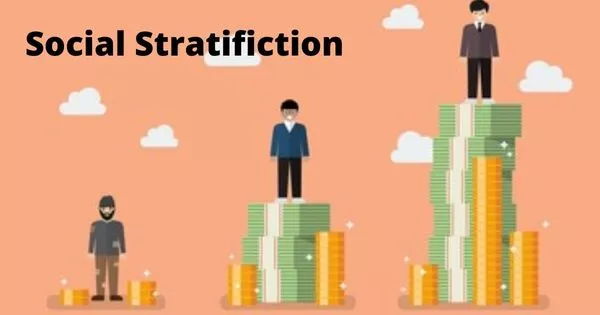Social stratification is the division of a society’s people into groups based on socioeconomic factors such as wealth, income, race, education, ethnicity, gender, occupation, social status, or derived power (social and political). It is the division of society into different layers or strata based on various factors such as wealth, power, social status, and occupation. As such, stratification is the relative social position of individuals within a social group, category, geographic region, or social unit. It is a system that assigns individuals or groups to hierarchical positions, resulting in inequalities and disparities in opportunities, privileges, and resources.
In modern Western societies, social stratification is typically defined in terms of three social classes: the upper class, the middle class, and the lower class; each class can be further subdivided into the upper stratum, the middle stratum, and the lower stratum. Furthermore, a social stratum can be formed on the basis of kinship, clan, tribe, or caste, or all four.
Social stratification can manifest in different forms and be based on multiple criteria, including:
- Wealth or Economic Stratification: This type of stratification is based on wealth and income distribution. It governs societal access to resources, property, and material goods. Wealthier individuals or groups have more economic power and privileges in general.
- Social Class Stratification: The term “social class” refers to the classification of people based on their economic status, occupation, and education. It is frequently divided into three classes: upper, middle, and lower. Social class influences access to education, healthcare, and other social benefits as well as social mobility.
- Occupational Stratification: Occupational stratification is determined by the types of jobs and professions that people pursue. Professionals, managers, skilled workers, and unskilled workers are all included. Income, social status, and prestige can all be affected by occupational stratification.
- Gender Stratification: The unequal distribution of power, resources, and opportunities based on gender is referred to as gender stratification. It frequently results in women’s marginalisation and discrimination, limiting their access to education, employment, and leadership positions.
- Caste System: The caste system, prevalent in some societies, particularly in India, is a social stratification system based on hereditary status. It divides people into rigid hierarchical groups, with limited mobility between them. Caste-based discrimination and social exclusion are significant issues associated with this system.
The structural and individual dimensions of social stratification are both present. It refers to the way society is organised and how resources and opportunities are distributed structurally. Individually, it affects a person’s social standing, life opportunities, and interactions with others.
Social stratification, critics argue, can perpetuate inequality, social injustice, and limited social mobility. However, proponents argue that by assigning individuals different roles and responsibilities in society, it provides motivation, rewards talent and hard work, and contributes to social stability.
















